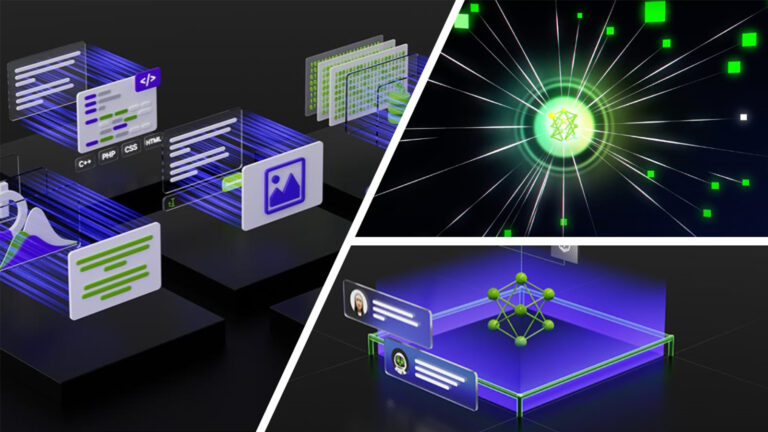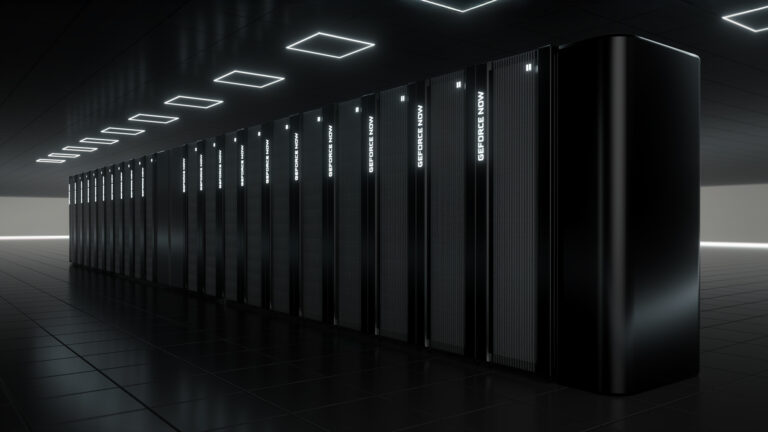Month: March 2025
Generative AI is unlocking new capabilities for PCs and workstations, including game assistants, enhanced content-creation and productivity tools and more. NVIDIA NIM microservices, available now, and AI Blueprints, in the coming weeks, accelerate AI development and improve its accessibility. Announced at the CES trade show in January, NVIDIA NIM provides prepackaged, state-of-the-art AI models optimized
Read Article
 With emerging use cases such as digital humans, agents, podcasts, images, and video generation, generative AI is changing the way we interact with PCs. This…
With emerging use cases such as digital humans, agents, podcasts, images, and video generation, generative AI is changing the way we interact with PCs. This…
With emerging use cases such as digital humans, agents, podcasts, images, and video generation, generative AI is changing the way we interact with PCs. This paradigm shift calls for new ways of interfacing with and programming generative AI models. However, getting started can be daunting for PC developers and AI enthusiasts. Today, NVIDIA released a suite of NVIDIA NIM microservices on…
 Attending KubeCon? Meet NVIDIA at booth S750, join our startup mixer, or stop by our 15+ sessions.
Attending KubeCon? Meet NVIDIA at booth S750, join our startup mixer, or stop by our 15+ sessions.
Attending KubeCon? Meet NVIDIA at booth S750, join our startup mixer, or stop by our 15+ sessions.
 In recent years, open-source systems like Flower and NVIDIA FLARE have emerged as pivotal tools in the federated learning (FL) landscape, each with its unique…
In recent years, open-source systems like Flower and NVIDIA FLARE have emerged as pivotal tools in the federated learning (FL) landscape, each with its unique…
In recent years, open-source systems like Flower and NVIDIA FLARE have emerged as pivotal tools in the federated learning (FL) landscape, each with its unique focus. Flower champions a unified approach to FL, enabling researchers and developers to design, analyze, and evaluate FL applications with ease. Over time, it has amassed a rich suite of strategies and algorithms…
 Noise is the notorious adversary of quantum computing. Qubits are sensitive to the slightest environmental perturbations, quickly causing errors to accumulate…
Noise is the notorious adversary of quantum computing. Qubits are sensitive to the slightest environmental perturbations, quickly causing errors to accumulate…
Noise is the notorious adversary of quantum computing. Qubits are sensitive to the slightest environmental perturbations, quickly causing errors to accumulate and make the results of even the simplest quantum algorithms too noisy to be meaningful. Quantum error correction (QEC) circumvents this problem by using many noisy physical qubits to encode logical qubits effectively immune to noise.
 The NVIDIA CUDA-Q platform is designed to streamline software and hardware development for hybrid, accelerated quantum supercomputers. Users can write code…
The NVIDIA CUDA-Q platform is designed to streamline software and hardware development for hybrid, accelerated quantum supercomputers. Users can write code…
The NVIDIA CUDA-Q platform is designed to streamline software and hardware development for hybrid, accelerated quantum supercomputers. Users can write code once, test it on any QPU or simulator, and accelerate all parts of the workflow. This liberates time for achieving scientific breakthroughs rather than waiting for results. CUDA-Q v0.10 has more features and increased performance…
 NVIDIA cloud gaming service GeForce NOW is providing developers and publishers with new tools to bring their games to more gamers—and offer new experiences…
NVIDIA cloud gaming service GeForce NOW is providing developers and publishers with new tools to bring their games to more gamers—and offer new experiences…
NVIDIA cloud gaming service GeForce NOW is providing developers and publishers with new tools to bring their games to more gamers—and offer new experiences only possible through the cloud. These tools lower local GPU requirements to expand reach and eliminate cost by offloading AI inference tasks to the cloud. At the Gamer Developer’s Conference (GDC) 2025, NVIDIA demonstrated hybrid AI…
 NVIDIA announced at GTC 2025 the release of NVIDIA Holoscan 3.0, the real-time AI sensor processing platform. This latest version provides dynamic flow control,…
NVIDIA announced at GTC 2025 the release of NVIDIA Holoscan 3.0, the real-time AI sensor processing platform. This latest version provides dynamic flow control,…
NVIDIA announced at GTC 2025 the release of NVIDIA Holoscan 3.0, the real-time AI sensor processing platform. This latest version provides dynamic flow control, empowering developers to design more robust, scalable, and efficient systems. With physical AI rapidly evolving, Holoscan 3.0 is built to adapt, making it easier than ever to tackle the challenges of today’s dynamic environments.
